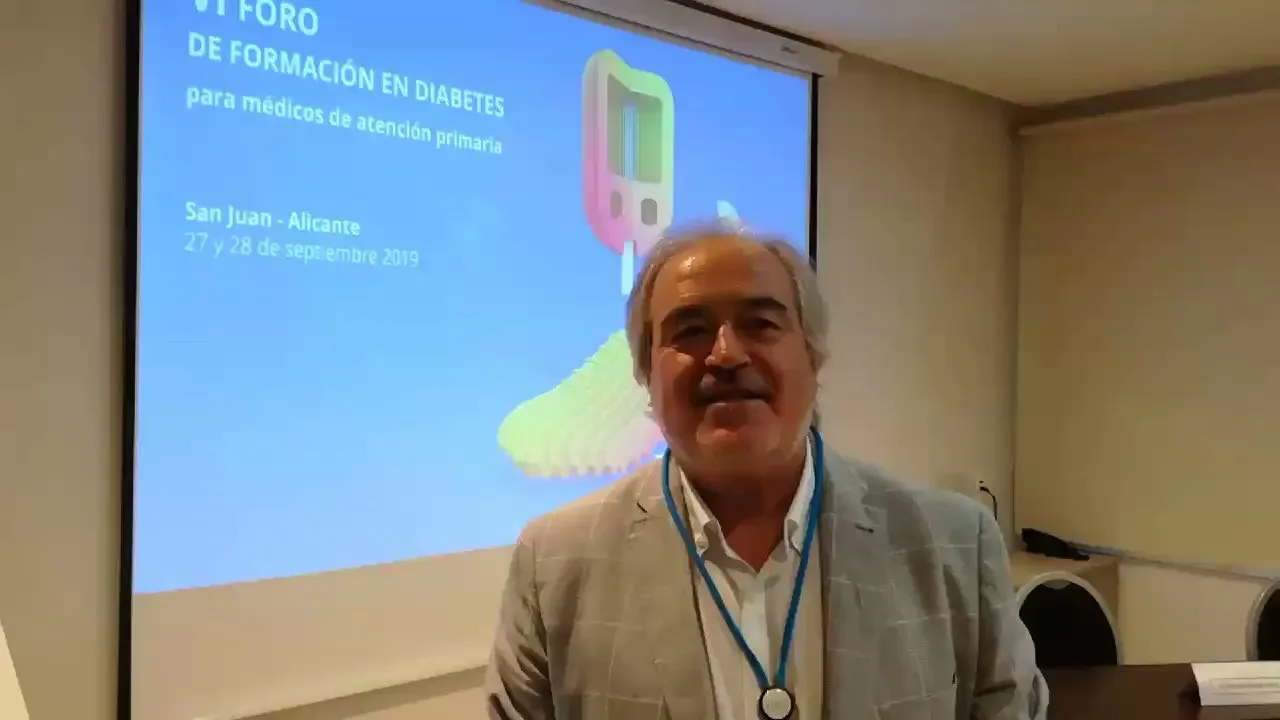
Glucose flash monitoring about diabetes self -management
The III Training Forum in Diabetes, opened today in Toledo by the Spanish Society of General and Family Physicians (SEMG) in the framework of its 'United Meeting in Cardiometabolic Health', incorporates within its practical workshops the latest news about theDiabetes management and approach, including glucose flash monitoring.It is a system designed to measure glucose levels in interstitial fluid in people with diabetes that facilitates adequate diabetes self -management and better glycemia control in these patients.
The members of the Cardiovascular Disease Working Group and Diabetes of the SEMG, Mercedes Retamal Ortiz and the nurse Eva Sáez Torralba, explain that this system consists of a sensor that is placed on the arm and changes every 14 days, and a reader whoIt could be the mobile phone itself.The aforementioned sensor performs glucose readings every minute (to obtain these readings, it is necessary that the person be at least one scan every 8 hours).
"But not only will he show us glycemia levels at the time of reading, but also provides us with information from the past (previous 8 hours) and the future (through tendency arrows)," says Retamal.These trend arrows indicate the speed at which it will decrease or increase blood glucose in the next few minutes;In this way, "it helps us to manage how much fast action insulin it would be necessary to inject into addition to the usual dose of the patient."
Another important fact is that through the application of this glucose flash monitoring system “we can program reminders so that we do not forget to scan the sensor and thus configure alarms that will notify us if we are facing a hyperglycemia”, as reportedThis specialist who exercises as a family doctor at the Don Benito West Health Center in Badajoz.In addition to allowing real -time data analysis, glucose flash monitoring has a computer platform in which the glucose monitoring information can be downloaded, generating the “report of the Glucose Ambulatory Profile” (AGP) (AGP) (AGP).
patients who can benefit from the tool
For its part, nurse Eva Sáez explained that the AGP report offers a set of standardized reports with information and graphics that show, for example, glucose and time in range objectives, average glucose, glycemic variability, glucose events, glucose eventsLow or elevated, daily glucose profiles, etc.This allows health personnel, jointly with the patient, "a retrospective analysis of the information of days and weeks and an assessment of the degree of control, which helps in making therapeutic decision making."
Sáez reported that financing by the National Health System of the “Flash” monitoring was approved in 2017 in children under 18 with type 1 diabetes (DM1), whose coverage was extended in 2018 and 2019 to adults with DM1.In April of this year it has been approved for people with type 2 diabetes mellitus with intensive insulin therapy, establishing specific requirements and criteria that appear in the resolution, proposing as a deadline for its implementation in the Autonomous Communities until December 31, 2024.

10/03/2022 11:18 a.m.
@fer - Diabetes Tipo 1 desde 1.998 | FreeStyle Libre 3 | Ypsomed mylife YpsoPump + CamAPS FX | Sin complicaciones. Miembro del equipo de moderación del foro.
Co-Autor de Vivir con Diabetes: El poder de la comunidad online, parte de los ingresos se destinan a financiar el foro de diabetes y mantener la comunidad online activa.
That was already done by Dexcom more than 15 years ago.

10/03/2022 11:34 a.m.
En 1922 descubrieron la insulina, en 1930 la insulina lenta. ¿Que c*** han hecho desde entonces?
